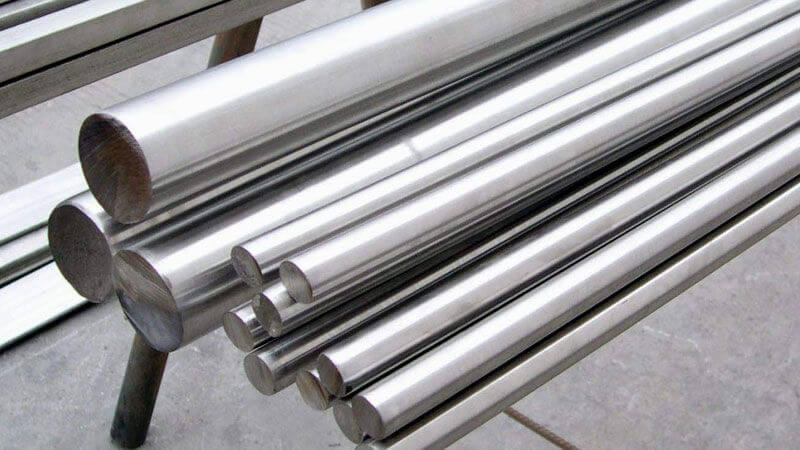Stainless Steel AISI 304- Introduction:
Besides iron and nickel, chromium is one of the primary alloying components in stainless steel. Chromium is the element that makes stainless steel live up to its name by making it rust-proof.
How does chromium contribute towards rust proof nature of Stainless Steel?
Stainless Steel contains chromium as one of its major alloying elements or methodology. When Stainless Steel 304 Bars & Rods are exposed to the atmosphere for sustained periods, the chromium present in Stainless Steel reacts with the oxygen in it. This leads to the formation of a film or layer on the surface of the metal. This layer of chromium oxide is known as a “passivation layer”. The passivation layer is the main reason for the rust-free nature of stainless steel.
What are the various types of Stainless steel?
Stainless steel comprises a base mixture of iron-chromium and nickel. Besides these elements, a few more filler metals are added to the composition to enhance the physical and mechanical properties of the metal. This led to the formation of numerous grades of stainless steel. Every grade falls under one of these types of categories. The five types are:
- Austenitic SS
- Martensitic SS
- Ferritic SS
- Duplex SS
- Precipitation Hardened SS
Austenitic SS has a BCC i.e., Body-Centred cubic structure. Austenitic Stainless steel grades are nonmagnetic. AISI 304 falls under the austenitic grades. AISI 304 is the most in-demand and highly used austenitic stainless steel grade. AISI 304 SS cannot be hardened by providing external heat. However, work hardening works brilliantly for Stainless Steel grade 304. Stainless Steel grade 304 has found its applications in multiple industries globally. We will discuss the applications of Stainless Steel AISI 304 after having a brief look at its chemical and structural composition.
Composition:
Stainless Steel AISI 304 is also referred to or known as the 18/8 grade of Stainless Steel. This name refers to the proportions of chromium and nickel present in the alloy. This grade of stainless steel comprises 18% chromium and 8% nickel. A few common sub-grades of Stainless Steel grade 304 are:
- 304 L- Lower carbon variant
- 304 H- High Carbon content
- 304 N- High Nitrogen
- 304 LN- Low carbon and High nitrogen
Advantages and benefits of using AISI 304 Stainless Steel:
- Stainless Steel grade 304 is highly formable, easily weldable, and can be drawn without softening processes.
- Even at cryogenic temperatures, AISI 304 SS retains its properties.
- Post weld annealing is required to retain maximum corrosion resistance.
- Stainless Steel 304 offers excellent corrosion resistance.
Applications:
- Chemical Industry
- Kitchen equipment- sinks and consumer durables.
- Food processing components
- Flanges and Fasteners
- Architectural applications like roofing, doors, windows, etc.
- Aerospace Industry
- Heat exchangers, etc.



